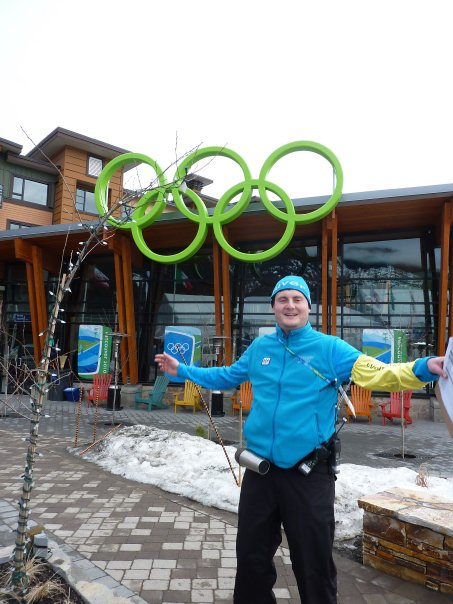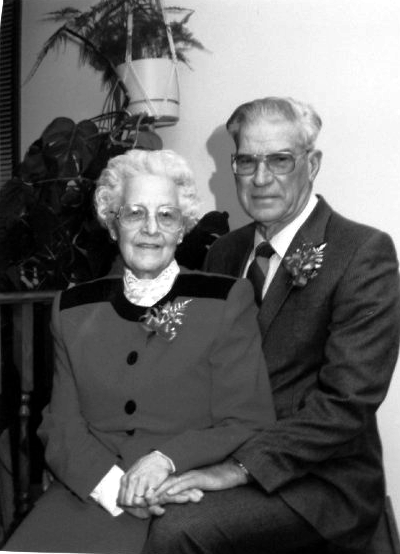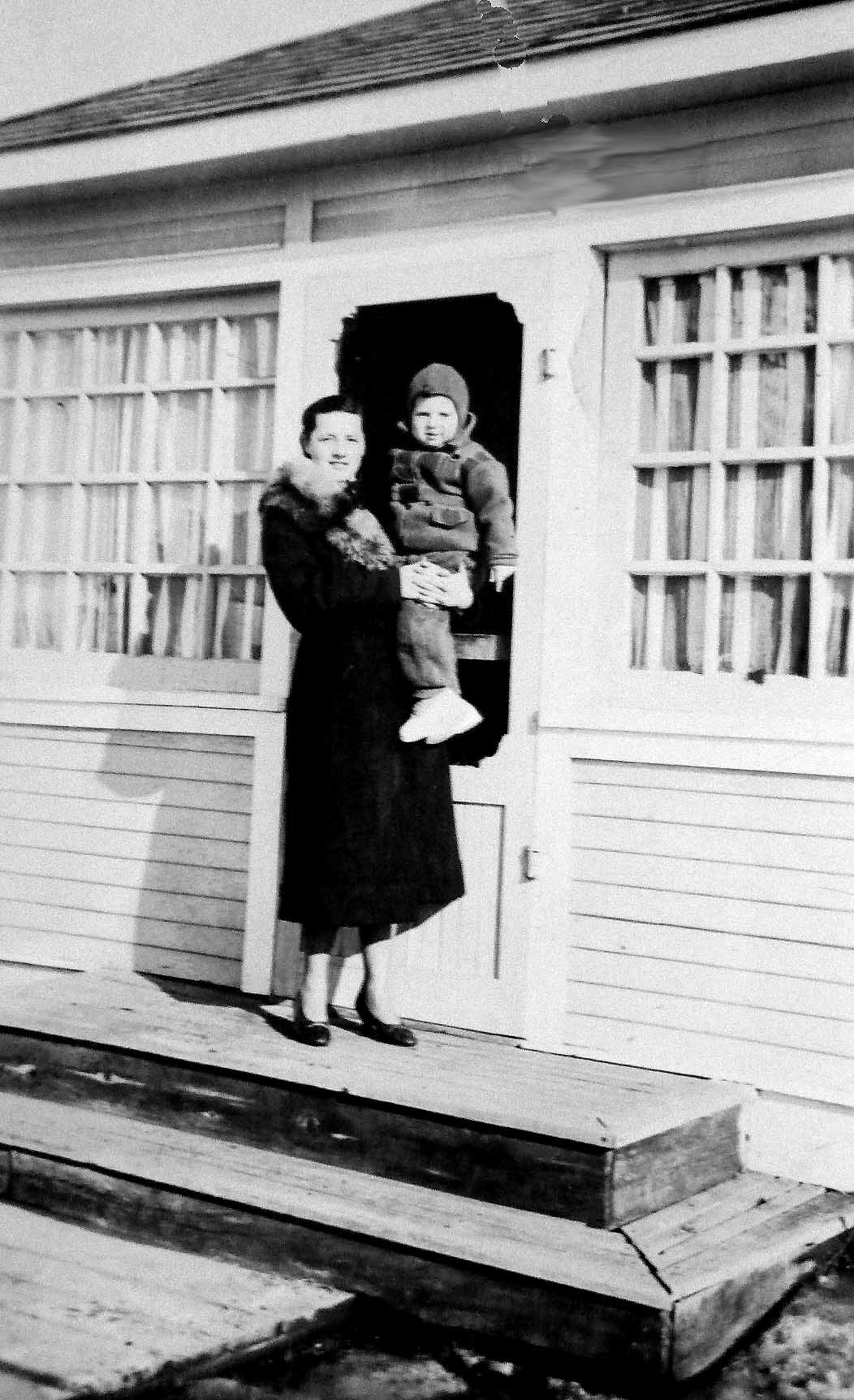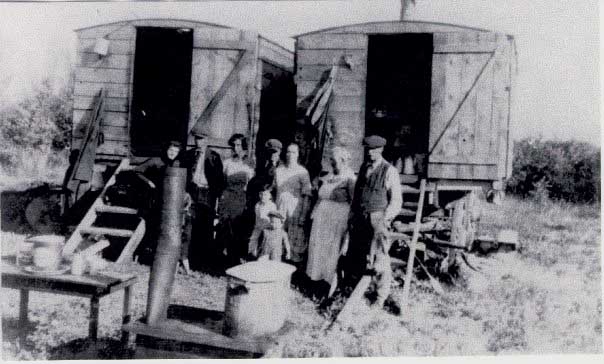Dmitry Brukhanov – A Young Russian Ambassador
Dmitry Brukhanov– A Young Russian Ambassador
Passionate! The first word we use to describe Dmitriy Mikhailovich Brukhanov, our most direct contact with Russia in the XXII Olympiad. This adjective is followed in rapid succession by inspired, eager, animated, excited and enthusiastic. This only begins to describe our Dmitriy.
 This young man, in his mid- twenties, hails from the historic city of Moscow, a city that has experienced more history than any Canadian city by a factor of many hundreds. For “older” movie buffs, who could forget ‘Dr. Zhivago’ a Russian love story of epic proportion? Perhaps the 2007 Russian historical movie “1612” will evoke similar feelings within a younger generation.
This young man, in his mid- twenties, hails from the historic city of Moscow, a city that has experienced more history than any Canadian city by a factor of many hundreds. For “older” movie buffs, who could forget ‘Dr. Zhivago’ a Russian love story of epic proportion? Perhaps the 2007 Russian historical movie “1612” will evoke similar feelings within a younger generation.
In a very real sense Dmitriy represents a modern day ‘love story’ – a love for his country and a love for the athletes of his country. Dmitriy has joined the XXII Olympiad with a single mindedness of purpose that might tend to elude those of us who are less focused on our mission or who live in more affluent nations. Dmitriy is here to learn – to learn as much as he can about the Olympics, the Olympic movement and the participating countries as is humanly possible in a few short weeks. The blazing red and white swirled colors of his homeland, as displayed by the Russian athletes, aptly represent his passion.
While Dmitriy occasionally searches for words to express his thoughts, he speaks clear, precise English with a Russian accent that is most pleasing to our English-only ears. It takes but a few sentences from Dmitriy to sense the passion he brings to his duties at Whistler’s Athletes’ Village.
(1039)
Laura Isabel: The Final Chapter – 5 of 5
Laura Isabel: The Final Chapter 5 of 5
In 2000, after 35 years on the farm, Laura and Wilfred bade a tearful farewell and moved to a home in Cold Lake just a few blocks from Frank and Louise. The move was initially difficult for Wilfred as he had lived on the farm for over 60 years. However, once in their new home, the couple again worked hard on the lawns and gardens and created a neighbourhood gem.
 Having become accustomed to the large deck that Frank and Wilfred built on the farm house after it was moved to the new farm site, Wilfred, Harold, Kari (McNeill) and Ashley (Yochim) constructed a large deck on their new home, a deck that continued to provide years of enjoyment for family and friends. Sadly, in 2002, after a lingering illness, Wilfred passed away in the Cold Lake hospital and is much missed by his family and friends. We shall always treasure those years on the farm.
Having become accustomed to the large deck that Frank and Wilfred built on the farm house after it was moved to the new farm site, Wilfred, Harold, Kari (McNeill) and Ashley (Yochim) constructed a large deck on their new home, a deck that continued to provide years of enjoyment for family and friends. Sadly, in 2002, after a lingering illness, Wilfred passed away in the Cold Lake hospital and is much missed by his family and friends. We shall always treasure those years on the farm.
Photo: Laura had a lifelong love affair with flowers. From the very earliest years on the homestead until the day she passed away in 2008, her house was always surrounded by flowers every summer.
While the passing of Wilfred brought to a close another chapter in the extraordinary life of Laura, true to her pioneer spirit, she continued her winning ways with a “warm welcome” for anyone who might chance to pop by for a coffee or home made pie or pastries. While Laura scaled back in some areas she continued to maintain a wonderful array of flowers and always had fresh baked bread and pastries for her family and friends. As she is fond of saying: “I love my Bosch” and she used it almost everyday to whip up a little something. Who can ever forget a big helping of her homemade bread and gravy or those buns that have became legend within the family?
(472)
Laura Isabel: Uffda! – A New Beginning – Chapter 4 of 5
Laura Isabel: Uffda! – A New Beginning – Chapter 4 of 5
Never one to look back with yearning or regret, Laura married a neighboring farmer, Wilfred Skarsen , and the happy couple started a whole new life with Dianne, who was just approaching her teens. Uncle Lennel (Wilfred’s older brother) lived with them while sharing the original family home until, 1982, at the age of 73, Lennel married Emma Adele Shular. Both  men, who, to that point, remained bachelors, were suddenly the step-fathers to 13 children and countless grandchildren. Both stepped into those big shoes as if they had been groomed for the roles their entire lives.
men, who, to that point, remained bachelors, were suddenly the step-fathers to 13 children and countless grandchildren. Both stepped into those big shoes as if they had been groomed for the roles their entire lives.
Laura’s beau, Wilfred, was the sixth of seven sons of Oscar (1880) and Petra (1890) Skarsen (Myhre) whose families began homesteading the Riverhurst area in I939. This enterprising Norwegian-Canadian family – son’s, Lennel, Julian, Melvin, Morgan, Percy, Wilfred, Wilbert and, daughter Stella – quickly expanded their interests into mixed farming, fishing, hunting, logging and milling, trapping, carpentry and commercial painting. They were an industrious family group and added much to life in the Cold Lake area.
Laura and Wilfred continued to live on the original Skarsen homestead in Cold Lake, however when Highway 55 was widened in 1981, they moved the entire farm, lock stock, barrel and grainery, 500 yards to the north-west. This new location, with freshly painted granaries, a new barn and a backdrop of pine and poplar, quickly became a showcase as Laura and Wilfred expanded the gardens and expansive lawns.
Their efforts lead to an Alberta Government “Farm Beautification Award” in 1985, just three years after moving to the new location. Laura also received personal recognition in 1996 when she was awarded the Provincial “Imogene Duce Award” for her activity with the local TOPS Chapter. A few words from that award express the sentiment of any who have come to know Laura:
“Love, caring and understanding – a person possessing an abundance of any one of
these qualities is truly exceptional. We have just such an exceptional lady in our chapter
and she is perhaps even more exclusive because she excels, not just in one but in all three
of these categories…” (Diana French, Chapter Leader, TOPS AB4003, Riverhurst)
(981)
Laura Isabel: The Young Woman – Chapter 3 of 5
Laura Isabel: The Young Woman – Chapter 3 of 5
During her teen years, Laura and her family went about the daily routine of cooking meals, working in the garden, mowing hay, looking after the animals, cutting wood and all the chores that were part of early farm life on the prairies. Because they were so close to Birch Lake, the kids had many fond memories of swimming and boating on those hot summer days when they could sneak away from their daily chores.
 Always a homebody, Laura traveled for the first time, at age 16, to work on a family farm outside Battleford looking after five kids under the age of four. She became so homesick after a couple of weeks that her dad traveled to Battleford in his Model T to pick her up. Her next job was working as a cook for a road construction crew as they rebuilt Highway 55 (now Hwy 3) out of Glaslyn.
Always a homebody, Laura traveled for the first time, at age 16, to work on a family farm outside Battleford looking after five kids under the age of four. She became so homesick after a couple of weeks that her dad traveled to Battleford in his Model T to pick her up. Her next job was working as a cook for a road construction crew as they rebuilt Highway 55 (now Hwy 3) out of Glaslyn.
When Laura was 21, the family suffered a double tragedy when her brother, Leonard, then twenty-five, was drowned in the Shuswap River while trying to save a friend’s life after the friend had fallen from a log boom on which they were working. While the whole family grieved over the loss, their father Bill took the death particularly hard. Later that winter he contracted scarlet fever and, tragically, in the early spring of 1940, he died at the age of 51 just a few months before Laura married Dave McNeill.
Following the death of her son and husband, life for her mother and the family became very difficult. Shirley was barely two, Helen and Marcia were five and seven and Tonnie had just turned ten. Melvin returned home to help his mom, followed later by Clifford who had served in the military until the end of the Second World War. In order to help make ends meet, Lilly, Helen and Marcia worked on neighbouring farm but the nearly all the money they earned was deducted for room and board and any remaining, which was pitifully little, was deducted from her meager widow’s pension of $30 per month.
(862)
Laura Isabel: The Early Years – Chapter 2 of 5
Laura Isabel: The Early Years – Chapter 2 of 5
Laura was the third of ten children born to Bill (William Skyler -1888) and Lillie Cressie Wheeler (Elliott – 1896). Siblings included Leonard (1914), Evelyn (1916), Kenneth (1920), Melvin (1922), Clifford (1924), Tonnie (1928), Marcia (1932), Helen (I934) and baby Shirley (1938).
In the early spring of 1924, Bill and Lilly, along with other family members, pulled up stakes and headed out from the Alsask, Saskatchewan, to take up homesteading at Birch Lake, a few miles North-East of Glaslyn. At that time the five children ranged in age from 2 to 10  years and Lilly was expecting her fifth. Clifford was born that September. Lilly attributed the distinctive brown birth mark prominently displayed on Clifford’s forehead to the fright she suffered when Melvin, then two, almost fell from the caboose while crossing a river enroute to Birch Lake.
years and Lilly was expecting her fifth. Clifford was born that September. Lilly attributed the distinctive brown birth mark prominently displayed on Clifford’s forehead to the fright she suffered when Melvin, then two, almost fell from the caboose while crossing a river enroute to Birch Lake.
Photo: The wagon train ready to head out. Howard (Laura’s dad’s brother) and Myrtle Wheeler, her mom and dad, Lilly and William, grandparents, and siblings, Kenneth and Evelyn.
While Bill and Lillie were able to provide their family with a comfortable life (by the standards of a 1920’s homesteader) it did require the labour of all family members. That first summer, after the crops and garden were planted (some of the land was previously broken), Bill set about building a three room log house with sod roof, mud plastered cracks and whitewashed exterior.
(1473)
Laura Isabel: Prologue – Chapter 1 of 5

In Memory of
Laura Isabel Skarsen (McNeill) (Wheeler)
A True Canadian Pioneer
1918 – 2008
Link to Part 1 A New Beginning
Link to part 2 The Early Years
Link to Part 3 The Young Woman
Link to Part 4 A New Beginning
Link to Part 5 The Final Chapter
Laura Isabel: Prologue – Chapter 1 of 5
It is amazing how much the world changed during Laura’s lifetime. Born in a Southern Alberta dust storm, at five years old she was on a wagon train with her parents and grandparents as they headed to Northern Saskatchewan in order to create a new life on a homestead.
She grew into adulthood in the Great Depression as clouds of dust blanketed the prairies and jobless men road freight trains in search of work. The ‘great’ depression barely ended when the Second World War seized the world in it’s powerful grip. It was a character building period that began in the ashes of one world war and ended with the euphoria that accompanied the years following World War II.
(2076)
